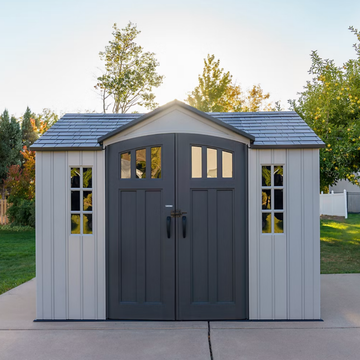When you find yourself setting your clock back one hour on Sunday, November 5, you may wonder why we have Daylight Saving Time in the first place. Believe it or not, we have Benjamin Franklin to blame.
Yes, the founding father who's famous for that whole flying-a-kite-in-a-lightning-storm incident also came up with the idea of resetting our clocks in order to conserve energy, according to David Prerau, author of Seize the Daylight: The Curious and Contentious Story of Daylight Saving Time. But the practice of Daylight Saving Time didn't actually begin until about a century later.
Daylight Saving Time was never for farmers.
Germany became the first country to implement Daylight Saving Time in May 1916, ostensibly as a way to conserve fuel during World War I. The rest of Europe followed shortly, and the United States hopped on board in 1918. But even though many of us have heard the practice started to help farmers who wanted an extra hour of daylight in the fields, the opposite is actually true.
According to Michael Downing, author of Spring Forward: The Annual Madness of Daylight Saving Time, farmers actually lobbied vocally against the practice. It caused them to lose an extra hour of light in the morning, meaning they had to rush their crops to market. And for dairy farmers, the time change throws off the cows, too. Because farmers so loudly opposed the shift, they became associated with it in the public memory, but over time, our memory of their collective position totally changed. Sorry, agriculture fam.
Woodrow Wilson abolished it at one point.
President Woodrow Wilson wanted to keep Daylight Saving Time after the first world war ended, arguing the extra light would help conserve energy. But those same farmers gave a resounding "please no," and he abolished it as a result. When World War II began, President Franklin Delano Roosevelt re-established DST, this time dubbing the change "War Time."
But when that war ended, the time change stuck. But because there weren't yet any national regulations, each municipality could set their own rules. That led to a chaotic free-for-all, not to mention (we imagine) a lot of people running late for their appointments when they inadvertently crossed into random new time zones.
That's why Congress passed the Uniform Time Act in 1966, requiring all states that observed it to synchronize their watches, as it were. States can opt out, and some do: According to the Department of Transportation, Hawaii, American Samoa, Guam, Puerto Rico, the Virgin Islands and most of Arizona don't recognize DST.
Daylight Saving Time may not actually save energy.
According to a report for Congress on the energy impact of extending Daylight Saving Time by four weeks, the time change saved about 0.03% of the country's total electricity use and about half a percent of total energy consumption per day during the four weeks Congress extended Daylight Saving Time in 2007. That said, lightbulbs and other commonly used electric devices have only become more energy-efficient over the years, which makes that saving negligible at best. And if people run more electricity-sucking air conditioners during those sultry, sunny summer evenings, they may eat the discrepancy right up.
It also doesn't make us feel better.
An extra dose of Vitamin D from another hour of evening sunlight has to be good for us, right? Not so fast. Doctors report a 24% spike in patients reporting heart attacks each time the clock springs forward. The incidence of workplace injuries also rises on the day after the clocks change, as employees get an average of 40 fewer minutes less sleep the night before. And studies have even shown that Daylight Saving Time can lead to a brief increase in depressive episodes. More car crashes, headaches and grouchy attitudes also arise (as you've probably noticed at the water cooler). So at least at first, Daylight Saving Time is actively not great for us.
Will Daylight Savings Time ever be permanently eliminated?
That's a good question. Fewer than 40% of the world's countries observe DST, and states like California, Florida and Montana have all petitioned to become exempt.
In fact, in March 2022, the U.S. Senate unanimously approved a bill known as the Sunshine Protection Act that would permanently extend DST for the entire year across the country. While the bill was written to take effect in November 2023, the Sunshine Protection Act never made it out of committee in the U.S. House of Representatives, where it would need to be passed by a solid majority before being signed into law by President Biden. In March 2023, several U.S. senators reintroduced the legislation to make DST permanent, but it remains stalled.













